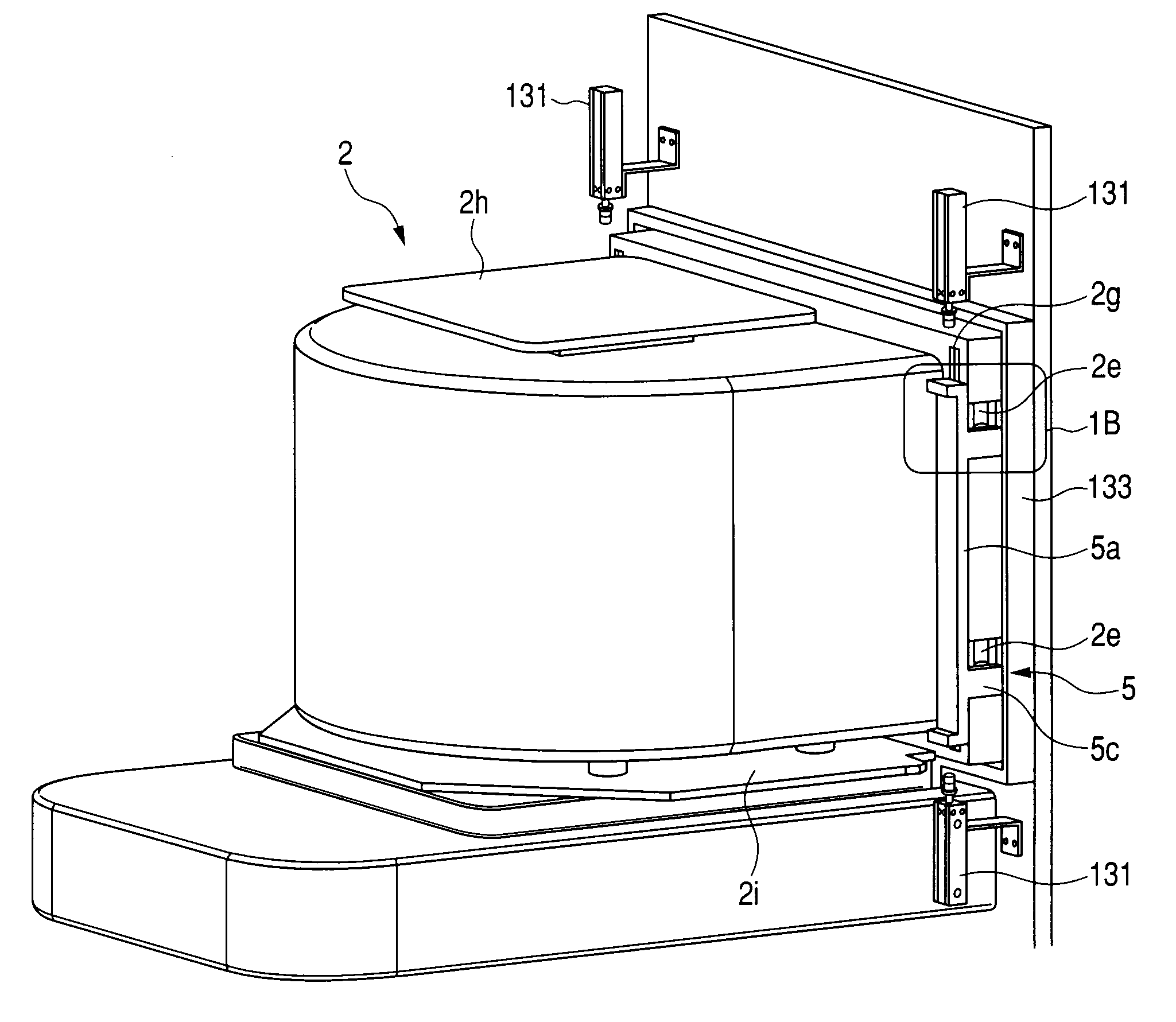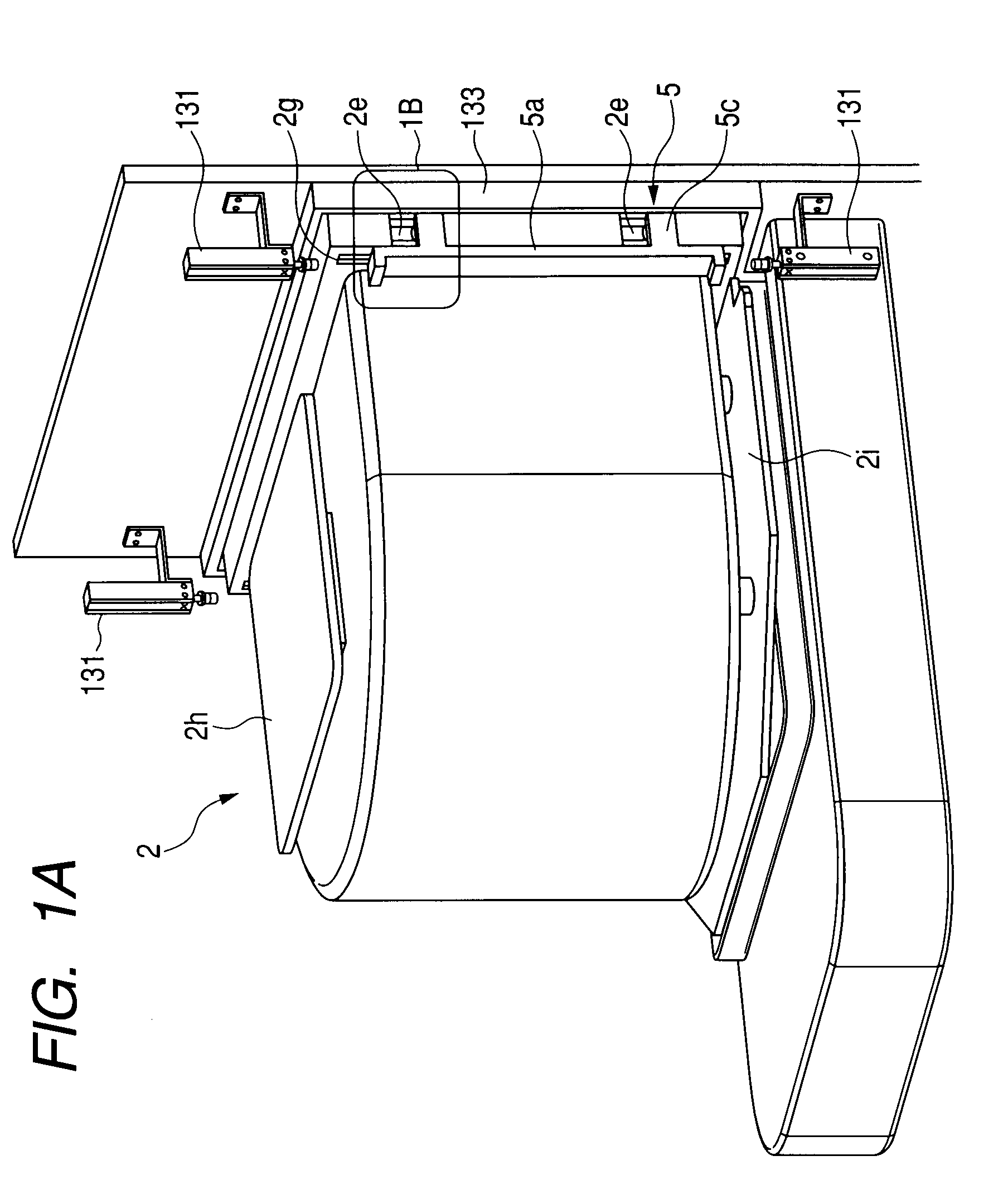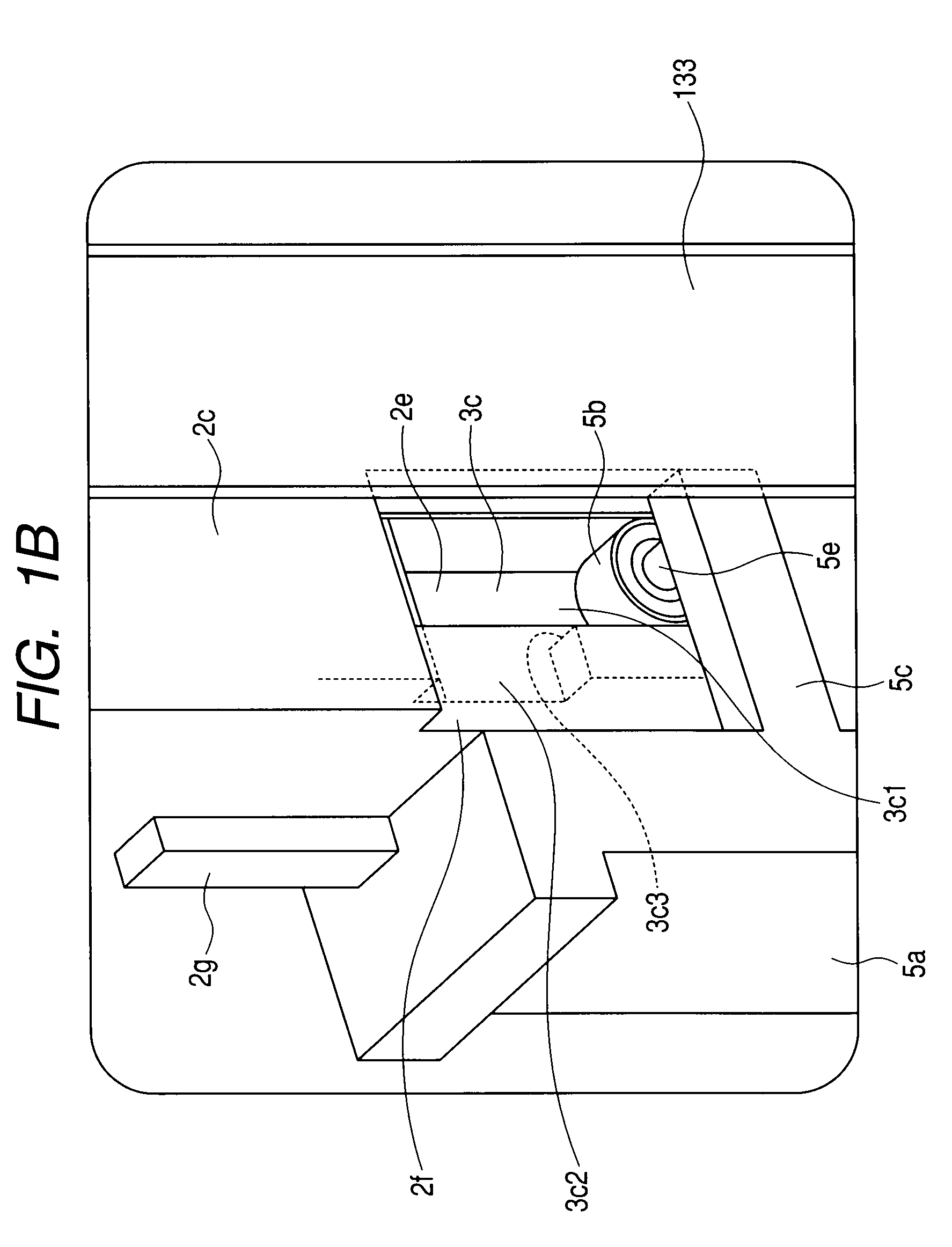[0010]The present invention has been made in view of the above-described situations, and has an object to provide a lid opening / closing system adapted for use with a pod or closed container that is prevented from being affected by very small dust particle adhering to the surface of the lid that closes the pod opening, and in which generation of dust during the operation of opening or closing the lid and
diffusion of dust thus generated into a mini-environment or the interior of the pod are controlled. Another object of the present invention is to provide a lid opening / closing system for a closed container in which when it is used for a pod for storing large
diameter wafers, it is verified that the latch pieces of the lid is engaging reliably with the pod in the operation of attaching the lid to the pod to close the opening, and the detachment of the pod from the FIMS is allowed after the
verification.
[0011]To achieve the above object, according to the present invention, there is provided a lid opening / closing system for a closed container including a lid having a flat plate-like shape and having an engaged portion, a container body having an opening to be closed by the lid and an
interior space that opens at the opening, and a latch mechanism including a latch main body that can slide along an axis relative to the container body and an engagement portion that projects from the latch main body and can engage with the engaged portion, for fixing the lid to the container body by the engagement of the engagement portion with the engaged portion, the system being adapted to fix the lid to the closed container by causing the latch mechanism to move along the axis and comprising: a housing that defines a mini-environment having an opening portion; a door that can move between a position at which it substantially closes the opening portion and a position at which it leaves the opening portion open, and can hold the lid; latch mechanism drive means that can operate the latch mechanism when the closed container is at a position at which opening and closing of the lid by the door is performed, the latch mechanism drive means being disposed in the vicinity of the opening portion outside the housing; and an engagement portion position detection sensor that detects the moving position of the engagement portion that changes with the movement of the latch mechanism along the axis caused by the latch mechanism drive means.
[0015]Change of the
diameter of wafers used in semiconductor manufacturing process from 300 mm (the
diameter of currently used wafers) to 450 mm have been considered. In pods that store such large-diameter wafers, it is required, with an increase in the size of the lid, to prevent deformation such as warpage and bending of the lid and to fix the lid reliably with adequate strength in fixation. The lid of the pod according to the present invention has a simple flat plate-like structure, and therefore the lid can easily be made light in weight, and the structure that adds rigidity of the lid while achieving a decrease in the weight can be used. Thus, such requirements can easily be met with reliability. The present invention provides a lid opening / closing system suitable for use with pods having the above-described structure, and enables to achieve a reliable fixation of the lid to the pod body when the pod is closed by the lid, which has been difficult with conventional pods.
[0016]Furthermore, since a lid having a simple plate-like shape can be used with the system according to the present invention, the lid can be advantageously reinforced against deformation in various ways. In addition, when the lid is fixedly attached to the pod body, the state of the engagement of them can be detected reliably.
[0017]According to the present invention, in the state in which the lid is fixed on the pod body, the lid is always biased in the direction of closing the pod opening. Furthermore, when fixing the lid, the latch mechanism that fixes the lid on the pod can apply a gradually increasing biasing force to the lid in the direction pressing the lid toward the pod opening. This enables an improvement in the air-tightness of the pod itself and a reduction in the possibility of generation of dust due to vibration of the lid during transportation. In addition, it is possible to fix the lid on the pod or bring the lid into
close contact with the pod in a preferred manner without increasing the driving force of the door. Thus, the closing force of the door can be controlled in several stages without high speed operation of the latch mechanism and without application of load in a short time. Therefore, stable engagement between the pod and the lid can be achieved without the generation of a large load acting temporarily between the pod body and the lid during the operation of the latch mechanism, unlike with conventional systems in which the latch mechanism starts to function abruptly at a certain operation position during the operation of the latch mechanism.
[0018]In the present invention, in the drive mechanism for operating the latch mechanism, the size of an operation portion (i.e. drive contact surface that will be described later) for operating the latch mechanism may be arbitrarily designed. Therefore, the degree of accuracy in the position at which the pod is kept when the lid is opened by the door may be lower than in the case of conventional systems. In the case of conventional systems, detachment of the lid from the pod and establishment of communication between the
interior space of the pod and the mini-environment cannot be performed unless a high degree of accuracy is achieved in all of the
fixed position of the lid relative to the placement position, the
fixed position of the pod relative to the opening portion and the position of contact of the door to the lid determined by the latch mechanism. According to the present invention, at least requirement for accuracy of the
fixed position of the lid and pod determined by the latch mechanism is relaxed, which advantageously leads, for example, to a simplification of the operation program of the lid opening and closing apparatus and stability of operation. Therefore, the operation state of the latch mechanism can be detected easily with reliability, and the state of fitting of the lid into the pod body that can be affected by the operation state of the latch mechanism can also be detected with reliability.
 Login to View More
Login to View More  Login to View More
Login to View More 


